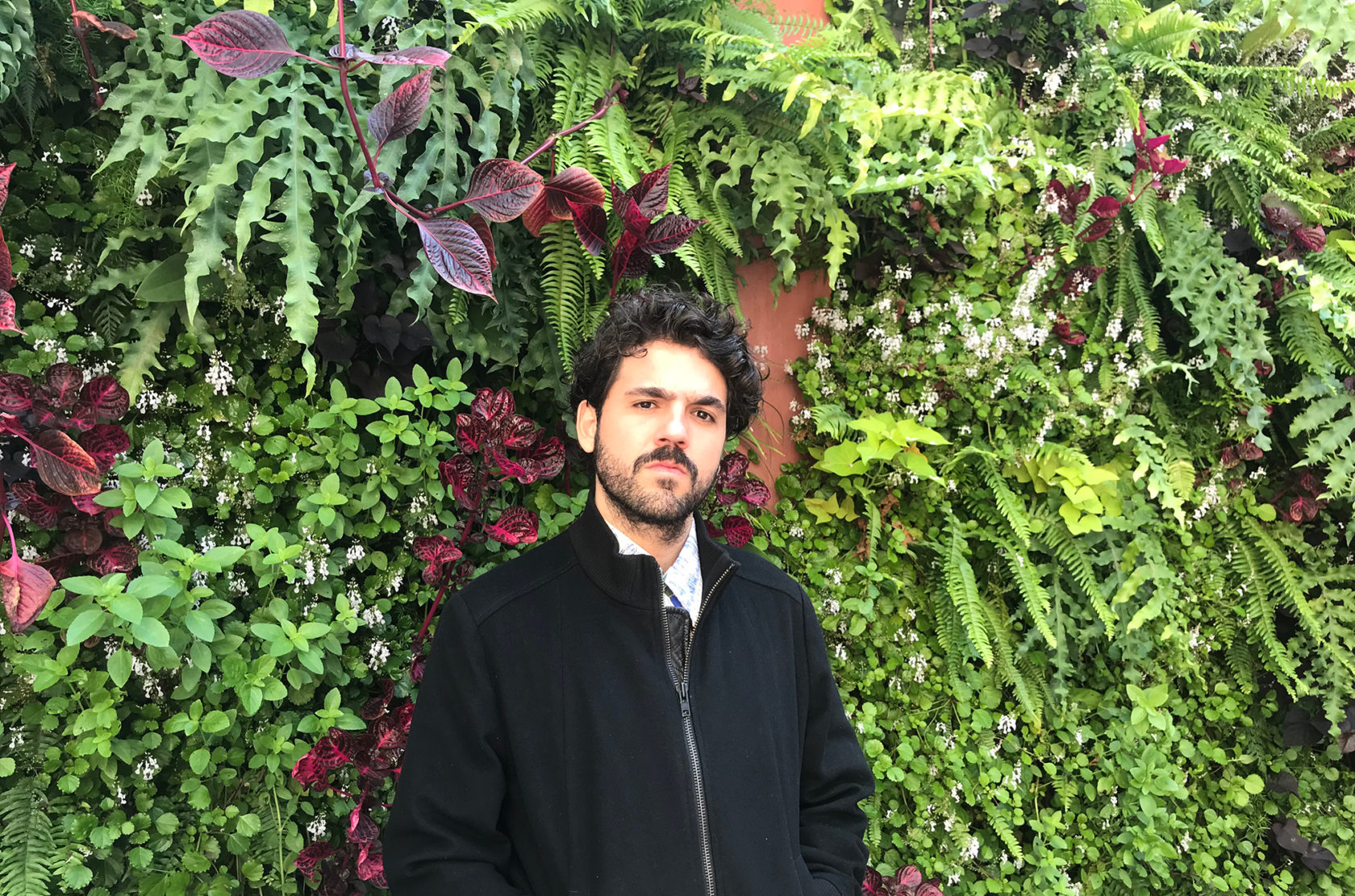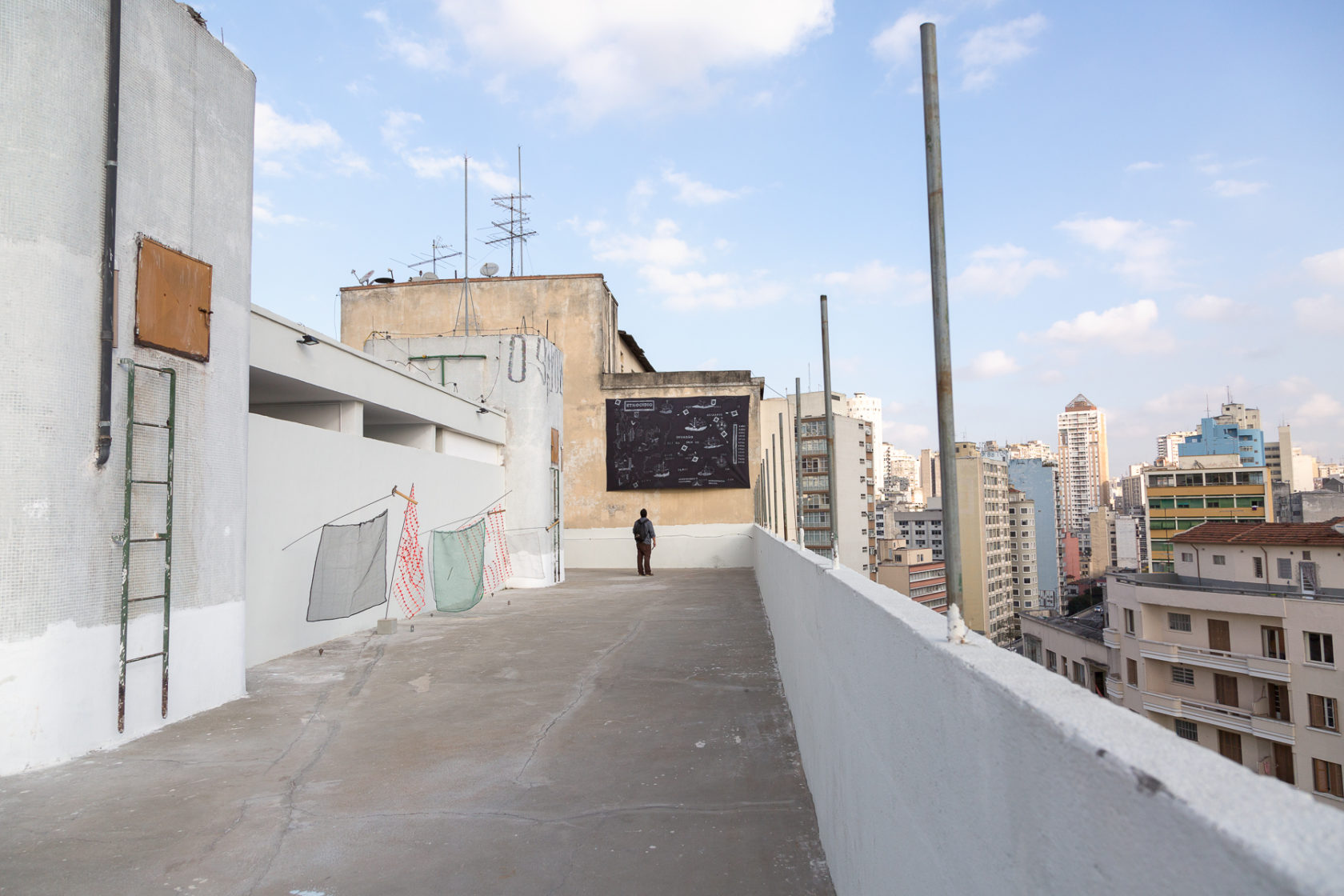Stroom Invest interviews / curator #4 Germano Dushá
Sao Paulo based Germano Dushá is a law school graduate and has a postgraduate degree on Art: Criticism and Curatorship. He started his work with the independent art project Coletor and has been working on different projects and in different fields since. Read more about Germano and his work in this 4th Stroom Invest Week interview.

With the independent art project Coletor, we focused on site-specific activities and we were interested in thinking and discussing the public sphere and the use of urban tissue. We have among others done projects in the streets, in an empty – to be demolished – modernist house, in a popular print shop and in a parking lot.
Since then, I’ve co-founded three other independent projects: Observatório – an exhibition space for contemporary art and culture in the rooftop of a residential building in São Paulo´s Centro –, BANAL BANAL – an online platform for contemporary art –, and um trabalho um texto – an exhibition program for contemporary art and textual production in São Paulo. As a freelancer, I have been working with many experimental curatorial practices. And I have been writing a lot, side by side with artists or contributing to many publications.
Besides the curating activities, I have a collective with the data engineer João Meirelles, called Online Doctorate, and I have been doing some experiments involving my curatorial practices and audiovisual pieces.
How does your background in law affects your work today?
My background in law, which also involved a lot of management and economics, has always helped me quite a bit. Not only with practical issues related to any project, like laws, paperwork, bureaucracy and economic strategies, but also with the logical and critical thinking. Now it is even more presented since we have been working directly with public policies, city planning and social research.
What are you currently working on?
Right now I’m 100% dedicated to a new project, called Fora: a multidisciplinary platform and think-tank based on social research, cultural manifestations and environmental design to investigate forms of living and creating the city. So it acts mainly in 3 ways. First, primary and secondary data about the public spaces in the city of São Paulo. Second, artistic, journalistic, essayist, scientific and educational activities in the public domain, both online and in the streets. And finally, interventions in the urban landscape.

The city, or more specific São Paulo, plays an important role in your work. What inspires you about this city?
Of course, living in a huge, chaotic and intense city like São Paulo takes a very important role. This city is a living paradox, everything here is complex and there is a multitude of cities within a city. There is so much energy, but also so much energy draining. There is an intense and fluid diversity and an enormous creativity, but also deep and explosive troubles and an enormous inequality. What inspires me about this city are people and activities who resist despite the oppressive structures the city is build on. The independent cultural organizations, illegal parties, squattings, free pre-college preparatory courses, young people using the public space as they feel, immigrants working in the streets, queer movements, and those who are interested in other ways of living and building the city.
Can you tell a bit more about the art scene in Brazil?
It is not easy to do any new activity related to art or culture around here. There is not a strong, well structured and intelligent policy for supporting and fostering culture, on any level – city, state or country. Instead we have an extremely difficult scenario, conducted mainly by ignorant or nepotist people, and aggravated in this post coup d’état era. The main part of the rare funding resources is taken by the same small network of organizations, the same lazy museums or art institutions with ridiculous or anodyne programs. Everything is about hard bureaucracy and lack of interest. To start something new in a soil like that, especially if you are not in the micro zone of privilege, is not an easy job. But still, there are many people that are creative, smart and confident enough to get things going. Anywhere you go you can find amazing and well articulated initiatives.
You mentioned Coletor before, your first project. Can you elaborate a bit more on how you started in that soil after graduation?
I was privileged enough to have the basic resources to take a little break to sort things out and to take a lot of risks. Back then I just had a strong intuition. I wanted to work with art, culture and communication, and I was always interested in flexible structures and open activities in the public space. It had to be free of institutional bonds or commercial commitments, with plenty of room to experiment, to take risks and do things in different or unfamiliar ways. After some small projects and deep researches I got into the idea of creating an independent art space. A place for encounters focused on site-specific exhibitions and other related activities. Me and my partner in Coletor, Fernando Ticoulat, started when we heard of an art dealer that had this modernist house as an underused warehouse.
It was an amazing spot that would only rest standing for a year — it would be demolished for a big new real estate project. We wanted to approach themes related to the urban site and how the city has been built, and we also wanted to go hardcore on the material use of the house. We offered the guy a deal, he was cool about it and tried to understand and support us in basic terms. We put together a little money from our savings to do some improvements and get the first exhibition done. Most important: we had some friends over to imagine the place and support us with a lot of ideas and muscle work. We ourselves worked a double, sometimes triple shift during the whole year to finance and get the program running. Fernando had a day job and I used the place as an office for other activities while I was in charge the whole day. We would do anything: managing, curating, production, installing, cleaning, gardening, graphic design, communication, texts, and more. Along the way we found multiple strategies to fund it, but never had the time to plan anything, everything was urgent. In 10 months we did 10 exhibitions (and some other events), and none of them were easy or simple projects. In every project we cared a great deal about all the aspects, from installation details and the texts, to visual identity and documentation. It was so crazy that it is still hard for me to put the numbers together and figure out how we got it done. Somehow it will always be a mystery.
After that experience the learning curve and the network expanded very fast. I started working with many artists in their projects, created other independent organizations, got invitations from other agents, galleries and magazines.

You referred to the creative, smart and confident people that get things going. Can you name some initiatives in São Paulo?
It is impossible to bring up some names and not forgetting or being unfair to initiatives that are worth mentioning. But not to miss the chance to list some projects that just come to mind: Desenrola E Não Me Enrola, an independent media collective from the South Zone of São Paulo focused on peripheral culture and the positive aspects of the outskirts; Mamba Negra, a powerful trans techno party and music label; Rede Emancipa, a social movement devoted to popular education; Aparelha Luzia, an urban quilombo that promotes visual arts; A Craco Resiste, a group of activists that fight institutional violence against drug users living in the streets; Ilú Oba De Min, a non-profit association based on the work with Afro-Brazilian cultures and women.
What makes me fond of them is the beauty of their creative gestures, their intelligence, their social technology. In their own way, each is an act of resistance, operating the aesthetics of possibility, of different forms of life in a plastered world structured to oppress. Against many odds, there is still so much energy.
And outside Brazil? Any people, project or place that influences your practice?
Yes, there are a lot of people, projects and places outside Brazil that influence my practice a lot. Although a big part of my energy is now focused on what is going on around here, I try to be connected and open to what comes from other places. I could easily make a long list of names from different natures, but recently I have been more interested in works done by people, groups and collectives that transit between several disciplines: fashion, pop culture, visual arts, music, audiovisual, critical thinking and activism. Like NON WORLDWIDE, Telfar, DIS, Barragán, Oneohtrix Point Never and Bernadette Corporation.
What do you like most about your job? And is there anything you like less?
What interests me the most about my practices is collaborating directly with many different people, and the exercise of meta-freedom — the possibility of changing the structure and the course of things anytime. Being able to come up with various forms of getting the work done. I try not to think from that perspective (of what I like less), but the most arduous and painful part of the work is to deal with the hard structures of the world: finding resources, project managing, doing the paperwork, meeting people in charge of things, figuring out the policies and politics.
To wrap up, what is your advice to art students or emerging artists?
To be honest, I’m not much into giving general advice, every experience is singular. But I can think of a couple of words as an ultra-synthesis from my own experiences and some references: make friends, go outside, out of the art system, circulate through different social and geographical spheres, think tactically, take risks, find your discipline, pay more attention to the phenomenon than to ideological coherence, fail once, fail again, fail better, and always keep it real!

—————————————-
In a collaboration between Jegens & Tevens and Stroom Den Haag a series of interviews will be published with (inter)national curators, artists and critics participating in Stroom’s Invest Week 2018.
The Invest Week is an annual 4-day program for artists who were granted the PRO Invest subsidy. This subsidy supports young artists based in The Hague in the development of their artistic practice and is aimed to keep artists and graduates of the art academy in the city of The Hague. In order to give the artists an extra incentive, Stroom organizes this week that consists of a public evening of talks, a program of studio visits, presentations and a number of informal meetings. The intent is to broaden the visibility of artists from The Hague through future exhibitions, presentations and exchange programs. The Invest Week 2018 will take place from 18 to 22 June, the public evening is on Wednesday following the exhibition My Practice My Politics.